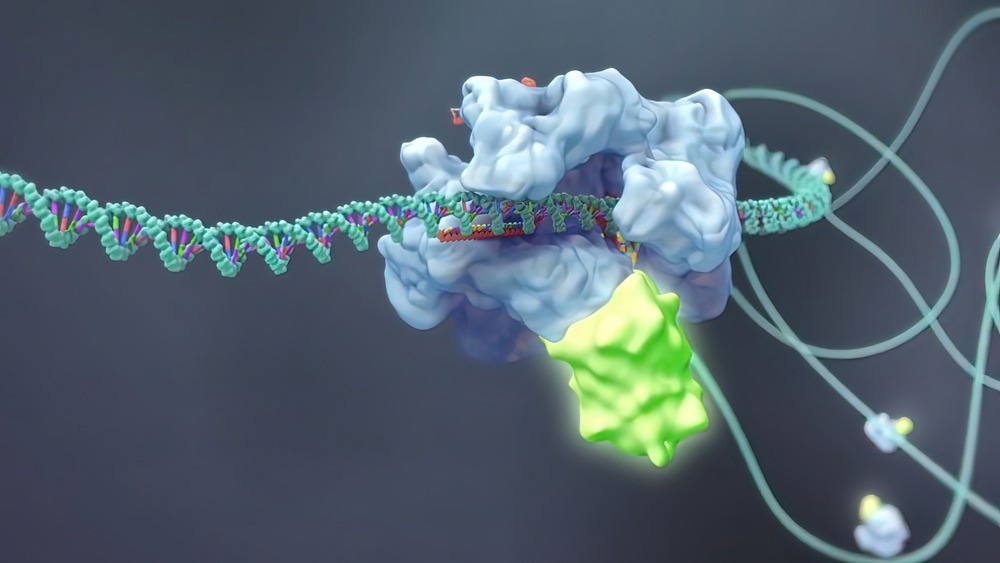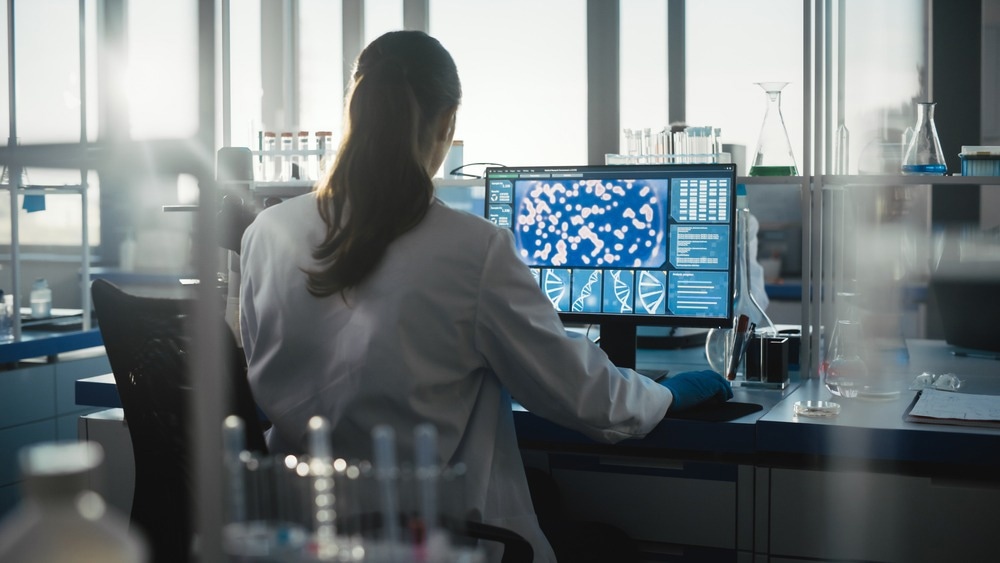In this interview, we speak with SLAS 2023 speaker Laralynne Przybyla, UC Scientific Director at the Laboratory for Genomics Research, about how they are utilizing CRISPR platforms to understand human disease biology in greater detail.
Please can you introduce yourself and tell us what inspired your career in genomics?
My name is Laralynne Przybyla, and I am the Scientific Director at the UC Laboratory for Genomics Research (LGR) and an Assistant Adjunct Professor at UCSF. I have been using genomics tools in the lab as long as I have been a cell biologist, but it was never my focus until a few years ago when I recognized the potential for CRISPR-based functional genomics to uncover new biology in an unbiased manner and answer outstanding questions in areas of human development and disease.
I have a long-standing interest in pluripotent stem cell (PSC) biology, particularly in building and validating new PSC-based models that mimic relevant aspects of human development and disease biology to use as screening platforms. At the LGR, we combine these tools with advances in functional genomics, next-generation sequencing, and population genetics to harness genomics tools to understand more about the causes and treatment opportunities for human disease.
You currently work as an Assistant Professor in the Laboratory for Genomics Research at UCSF. Can you tell us more about some of the research that you are currently involved in and your day-to-day responsibilities?
The LGR is a San Francisco-based research collaboration between GSK, UCSF, and UC Berkeley with a mission to develop and deploy new CRISPR-based functional genomics tools to advance our scientific understanding of the relationship between genes and disease. We have a particular focus on developing models that are relevant to human disease biology, such as primary human cells and iPSC-derived cells, and devising strategies to run large-scale screens in complex co-culture and organoid-based model systems.
We also aim to scale and disseminate new technologies we build within our partner institutes and to the functional genomics community as a whole.

Image Credit: picmedical/Shutterstock.com
According to data, less than 30% of the world’s researchers are women. How important is representation in life sciences, and what makes you proud to be a woman in science?
Diversity is crucial to the success of any endeavor. We want scientists at our institute with different backgrounds, viewpoints, and knowledge bases to foster collaboration and healthy scientific discussion within the team. This includes representation from different nationalities, scientific backgrounds, and gender identities, which is how I see my contribution as a woman in science fitting in with our broader mission.
I have been and continue to be inspired by many women in science, including, of course, the recipients of the 2020 Nobel Prize in Chemistry for their work on CRISPR technology, Jennifer Doudna and Emmanuelle Charpentier, who I hope inspire the next generation of women in science to pursue careers in genomics and biology research.
The field of genomics has evolved rapidly over recent years, thanks largely due to the advancements in CRISPR. How has CRISPR revolutionized the life sciences, and in what fields does it particularly lend itself to?
A few areas in which CRISPR-based technologies have thrived and allowed the field to expand rapidly include the ability to perform different types of large-scale CRISPR screens and the continued advance in new types of CRISPR modalities, for example, those that allow for precise genome modifications at the level of single base pairs or for the ability to co-opt endogenous cellular mechanisms to modulate gene expression. These new technological advances will continue to expand the researcher’s toolbox beyond traditional KO-based screening approaches. It will be interesting to see how these technologies are incorporated into more sophisticated screening platforms to learn more about all areas of cell biology, from fundamental questions around genomic organization and epigenetics to translational applications in human disease biology.
We are currently able to better understand biological pathways through genome-wide screenings coupled with CRISPR tools. How do these screening platforms work, and what are some of the current disadvantages?
A successful CRISPR screen requires three things: the appropriate CRISPR tools, the establishment of a suitable model system, and the development and validation of a readout or assay that addresses the biology of interest.
For CRISPR tools, our lab currently focuses on CRISPRi and CRISPRa screens, which provide us with the complementary ability to turn genes off and on to gain insights into mechanistic and pathway biology. For example, we can identify gene hits that come up with different directionality in CRISPRi versus CRISPRa screens, but even more interesting are hits that come up in only one or the other as these might represent redundant genes or core components of protein complexes.
For model systems, I previously mentioned a focus on PSC-derived and primary human model systems, as we are generally interested in a particular disease area, so we need our models to express the genes that are endogenous to the cell type or organ of interest for our screening platforms to identify the most disease-relevant targets. It has become increasingly apparent that cell identity plays a role in every aspect of cell biology, not just transcriptional state but also DNA accessibility, chromatin organization, protein turnover, etc., so getting the model right is key to understanding the biology of interest.
For the assay, we perform both pooled and arrayed screens depending on the goal of the screen. Pooled screens allow for easier scaling but are traditionally limited to readouts that involve cell survival or a FACS-based phenotype, though newer methods allow for single-cell sequencing at scale to provide rich phenotypic readouts. Arrayed screens can include plate reader or microscopy-based readouts, which provide more flexibility for dynamic or intracellular phenotypes or phenotypic readouts in more complex models such as co-cultures or organoids.
All screens require finding the right balance between the complexity required to address the question of interest and the simplicity required to scale the approach. In addition, rigorous testing and validation of the system prior to implementing the large-scale screen is essential and always worth the time and effort involved!

Image Credit: Yurchanka Siarhei/Shutterstock.com
You are giving a talk at SLAS 2023 titled ‘Next-generation CRISPR screening platforms for insights into human disease biology’. Can you provide us with an overview of what you will discuss in this talk?
This talk will focus on current work the LGR is doing to bring together advances in induced pluripotent stem cell (iPSC) differentiation, genetic engineering, CRISPR techniques, and automation to improve the scale, robustness, cost, and quality of functional genomics screens. We will highlight pioneering developments in models, scaling, and assay technologies and describe how they can be combined into multiparametric phenotypic readouts to gain deep insights into mechanistic disease-relevant pathway biology.
A current focus is on developing improved robust, scalable, and deterministic methods for generating iPSC-derived cells differentiated toward a specific lineage for CRISPR screening applications, as traditional differentiation approaches suffer from population bottlenecks or low efficiency. To that end, we are leveraging functional genomics technologies to overcome these challenges, including single-cell multi-omic profiling methods to identify deterministic TFs suitable for generating any cell lineage and identifying cell-type-specific viral restriction factors to modulate lentiviral delivery to terminally differentiated cells. Another avenue is new delivery mechanisms beyond lentivirus. We will discuss the strategies we are developing in these areas to improve our model systems in conjunction with developments across CRISPR modalities and screening platforms.
Are you hopeful that as the field of functional genomics continues to progress, we will better understand the mechanisms behind diseases? What would this mean for life sciences research?
One goal at the LGR is to harness functional genomics to understand the mechanistic basis of human disease biology, so I am confident that we will make abundant progress on this front in the coming years. An example I can point to is around linking genetic markers to disease mechanisms. DNA sequencing has become so easy that we now have an enormous amount of data from genome-wide association studies linking single nucleotide polymorphisms (SNPs) to human diseases, but the reality is that up to 95% of SNPs identified are in non-coding regions of the genome, so we don’t even know which genes are relevant to disease.
The hypothesis is that these SNPs are in regulatory elements of the genome, and now we have the tools to target these regions using CRISPR modalities, which will help researchers identify genes involved in many diseases that are common and heritable but for which the genetic underpinnings are unknown.
Are there any other fields in the life sciences that would benefit from technological advancements in screening approaches?
The beauty of CRISPR/Cas approaches is that all that they require is knowledge of the DNA sequence to target the Cas9 enzyme to a particular genomic region. These methods can therefore be applied to outstanding biological questions in any field where genetic sequence data is available, including unconventional model organisms, infectious diseases, plant biology, agriculture, and many others. Many advances have already been made on these fronts, and I am excited to see how other fields may benefit as well.

Image Credit: Gorodenkoff/Shutterstock.com
As the life sciences sector continues to evolve, are there any other particular developments you are excited about?
I am definitely excited about what the future holds for this field, including seeing how we can bring together recent advances in iPSC differentiation, genome editing, functional genomic screening, and population-wide DNA sequencing, among other things. It is certainly an exciting time to be working in the CRISPR field, particularly in the context of drug discovery research.
What is next for you and your research? Are you involved in any exciting upcoming projects?
We are involved in so many exciting projects! We have an extensive network of collaborators and ideas on new technologies to further develop from all our amazing scientists at the LGR, so learn more by visiting our website below and at the Assay Development and Screening session at SLAS, where I will be presenting. And stay tuned for new developments from the LGR!
Where can readers find more information?
LGR website: www.lgr.bio
Nature Genetics Review article on CRISPR screens: https://www.nature.com/articles/s41576-021-00409-w
BioRxiv preprint on LGR cloning strategy and applications: https://www.biorxiv.org/content/10.1101/2022.12.22.521524v1
About Laralynne Przybyla
Laralynne Przybyla, PhD, is an Assistant Adjunct Professor at UCSF and UC Scientific Director at the Laboratory for Genomics Research, a joint industry-academia hybrid institute between UCSF, UC Berkeley, and GSK. Her research has focused on cell and developmental biology, including building human iPSC-based models to uncover the molecular basis of developmental processes and disease states.
Dr. Przybyla obtained her PhD in Biology from MIT and has experience leading technology development teams in both academia and industry. At the LGR, Laralynne leads the UC team to develop and implement new CRISPR-based functional genomics models, tools, and platforms, with the goal of creating and disseminating next-generation technologies and furthering our understanding of the mechanisms and genetics underlying human disease biology.